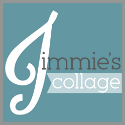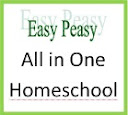 |
| Hands on learning |
Making mummies, building a pyramid with lego, fooling around with some bandage and making edible mummies.
They made the bandage mummies above using pipe cleaners as the skeleton and just wrapping some bandage around it, added some googly eyes for fun.
Making the edible mummies: We made pizza dough, rolled it in long thin strips and wrapped it around some Viennas (sausages). We used chicken Viennas. You could basically use anything you wish.
Here is the pizza dough recipe:
200g plain white flour (I used normal cake flour)
1/4 tsp salt
1 tsp fast-action dried yeast
150ml hand-hot water
1 tbsp olive oil
Mix flour, salt and yeast in a bowl. Add warm water and olive oil in middle. Mix to a soft dough. Knead for about 5 minutes. Cover with plastic let it rise for 45 minutes. When ready knead again for 2 minutes. In a preheated 220 degree oven bake for 20-25 minutes.
This recipe makes yummy pizza, just add tomato sauce and your toppings of choice. If you want to make 2 decent size pizzas double the ingredients.
Watch this video explaining of the mummification process.
Below you can watch a funny animated movie about the Pyramids (ok... it is has nothing to do with this lesson, but it is so extremely funny - had to share)
In this BBC production of Building the Great Pyramid you experience the story of the people behind the pyramids. A great movie. The movie is broken up in 6 sections, ensure you link up to youtube to view all 6. It is really a must watch and very touching. Below is part 1.
If you want to get a 3D look at the Pyramids at Giza you have to look at this site. It is the most amazing 'tour'. (Make sure you have very good internet connection for this one to work) also see on the same site Khufu Reborn
Here is some hands on paper crafts and art to make and do:
Click on the image to take you to the page
 |
| Great Pyramid of Khufu |
 |
| Sphinx |
 |
| Pyramid Book |
 |
| King tut Pastel Resist |
3D Ancient Egypt Lapbook at Practical Pages, scroll down to get to Egypt.
Interactive sites and additional readings:
On this interactive site, you can read all about the burial process I read it in the book of the dead, there are games to play and loads to learn. (highly recommend this site)
Discover more about Ancient Egypt at the National Museums Scotland
Explore The Royal Tombs of UR
Explore Ancient Egypt
Birmingham Museum - Ancient Egypt
Online games:
On the Horrible Histories site is two games that can be played Mummy madness and Tomb of Terror.
On BBC - History is another game Pyramid Builder
Below is a nice Photo Infographic about the Great Pyramids
We also read the book Tutankhamen's Tomb. It is a fascinating pop up book that we bought at the local Bargain Books.
With every chapter we do from SOTW I create a copywork page, it includes a narration piece from the activity book in both English and Afrikaans for them to complete.
There are hundreds of resources, crafts etc to explore, I have only listed those that we looked at and done.
Happy learning.
Blessings
Maryna






















































